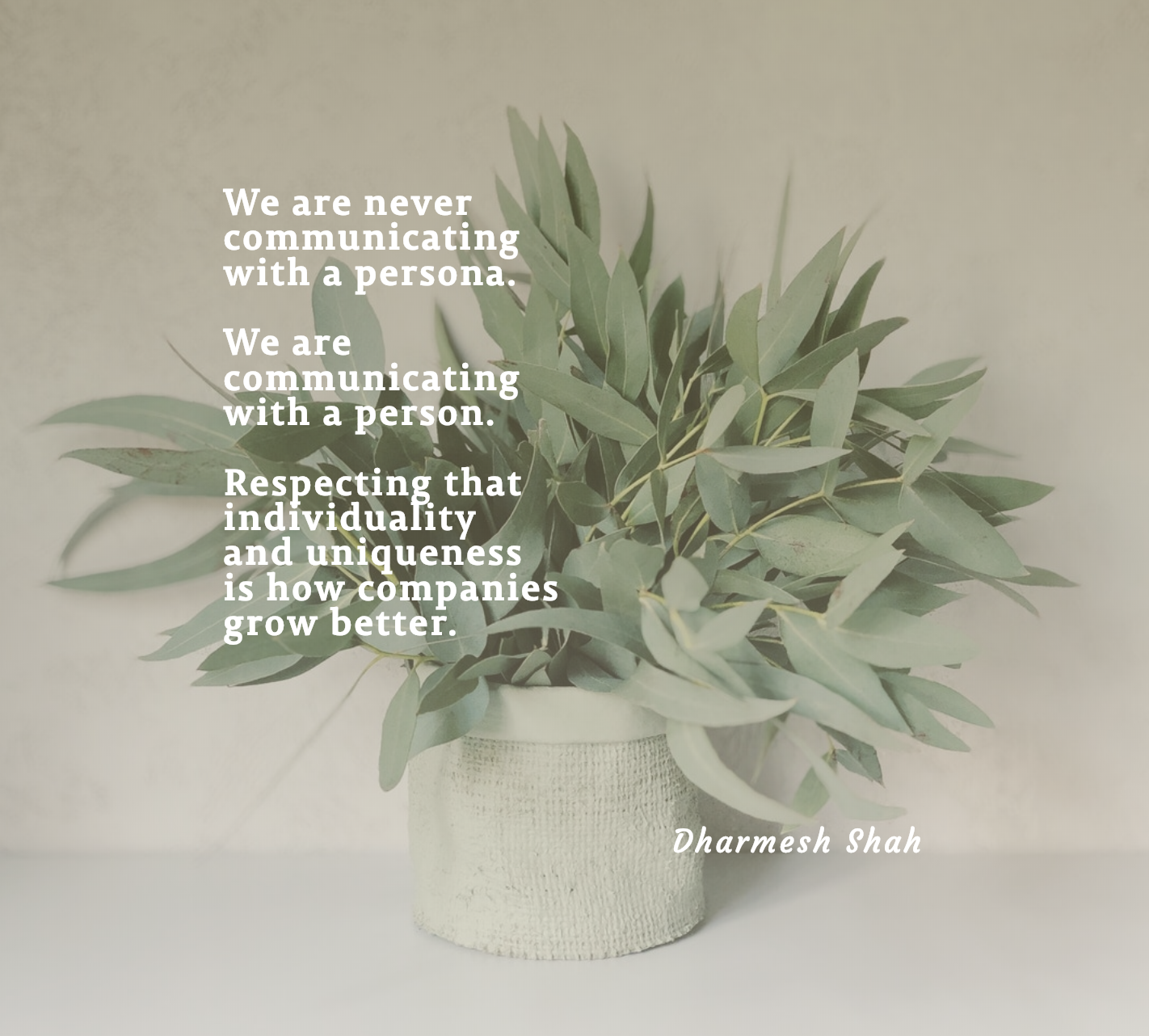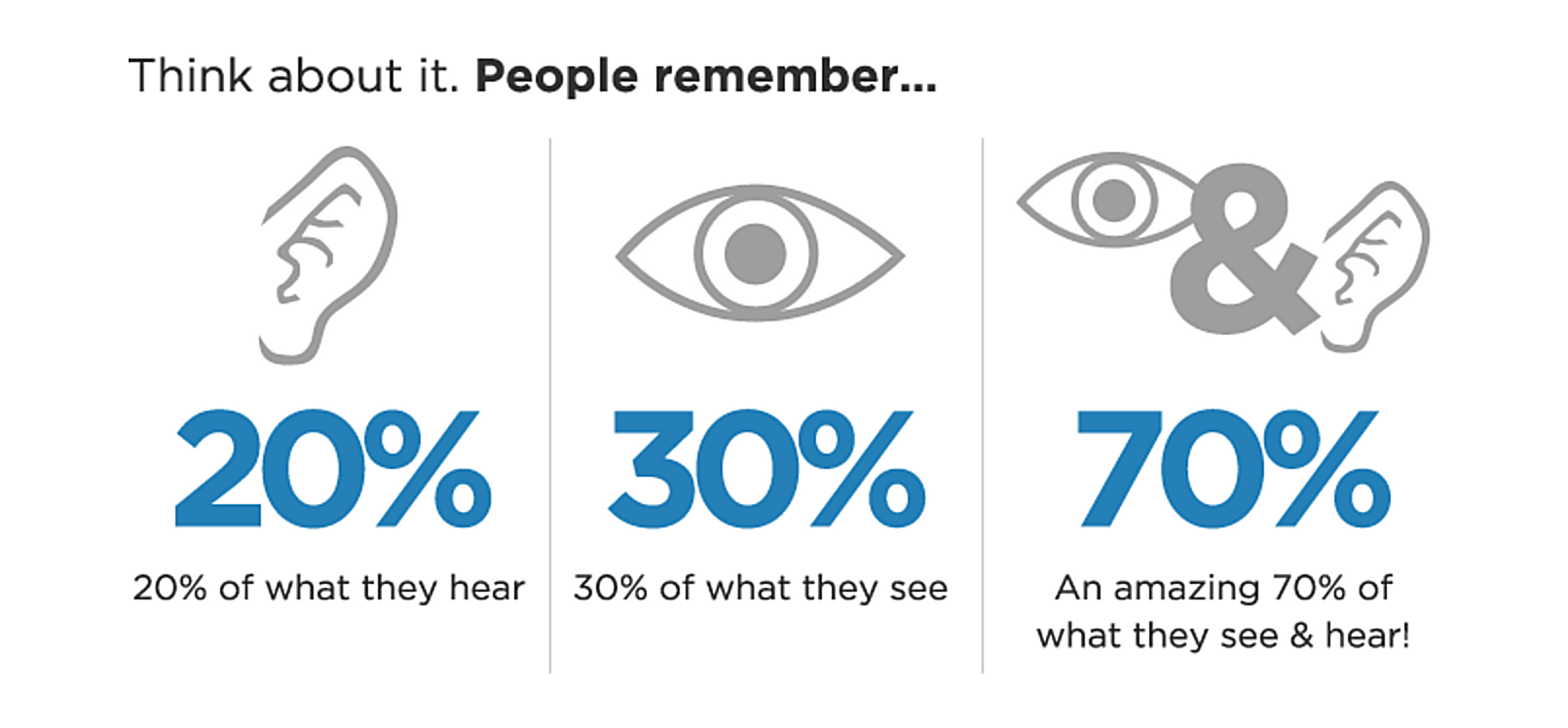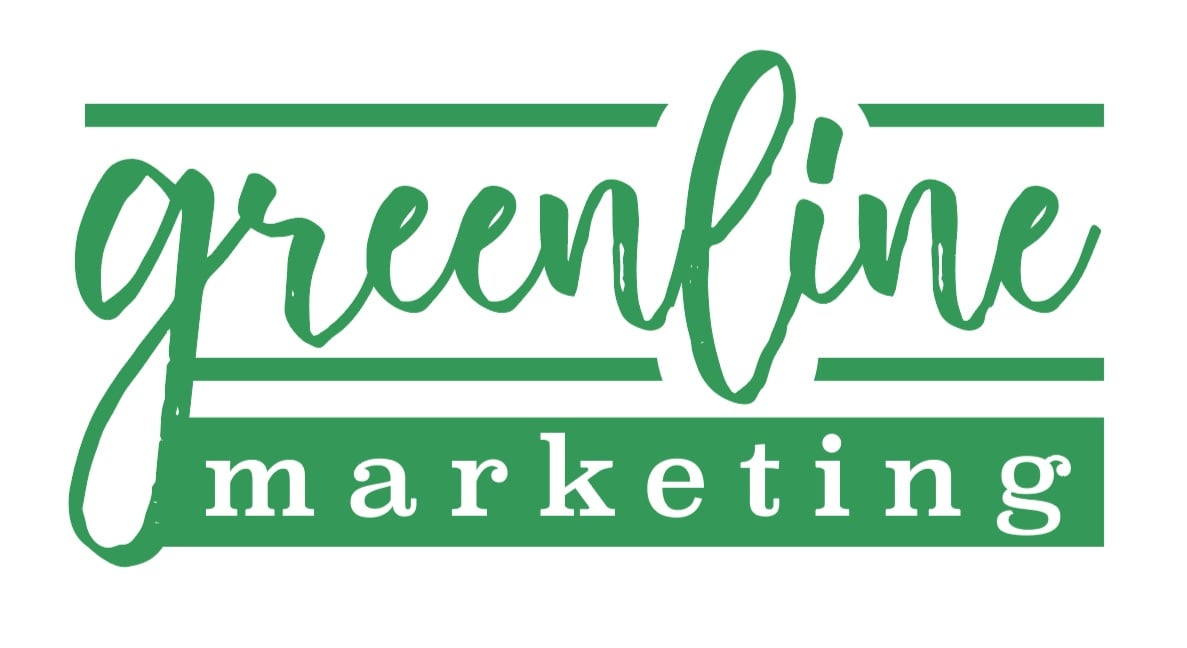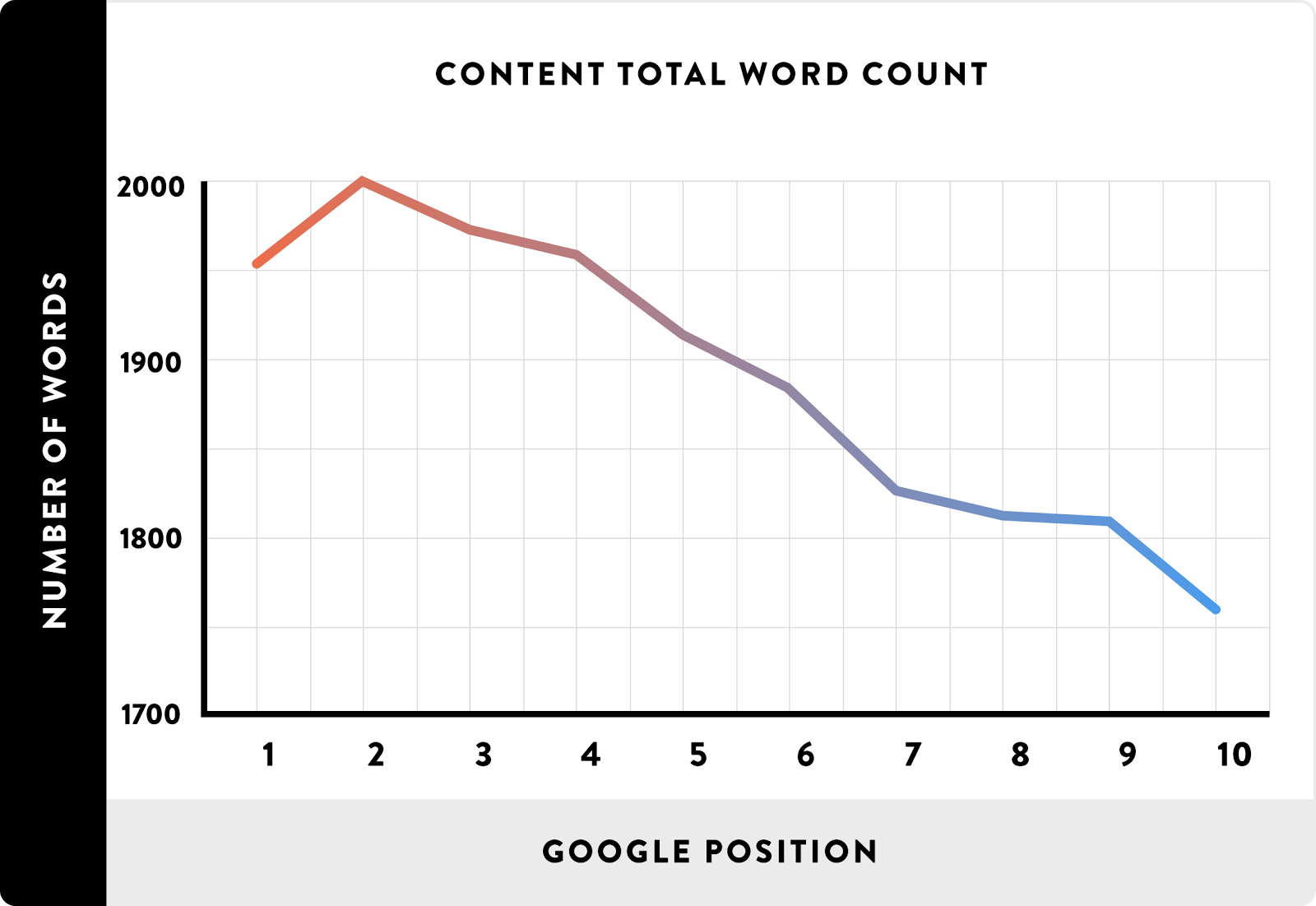A new year brings the excitement of a fresh start, a clean slate, and a clear vision. Somewhere among the lists of resolutions for learning, loving, and losing weight (I mean, I’m just guessing) - I’d venture to guess themes of balance can be found on your list, too.
But what about your digital marketing strategy? Is balance found there?
As I was reading and researching what’s coming at us in regards to 2022 marketing trends, I found a major commonality: balance. A big part of impactful marketing results comes from your own marketing recipe - and all good recipes have the harmony of balance. It’s always easier said than done - but when you find it, that magic “ah-ha!” feeling is downright irresistible.
1. BALANCE ADS + REPUTABLE CONTENT
For the past several years, we know marketers and businesses everywhere are straying from the traditional idea of ads. In fact, a Nielsen study shows “the top four most-trusted sources of advertising” are:
- People You Know
- Branded Sites
- Editorial Sites (AKA written content)
- Reviews + Testimonials
And somewhere on the very bottom of that list, you’ll find traditional advertising efforts. In this day and age, more than 40 percent of internet users actively implement ad blocker software on both desktop and mobile devices - so some of those digital ads don’t even reach whom they’re intended to.
Now, I’m not saying you should ditch online ads completely… not at all. There is a time and place - but we have to practice what we preach with the inbound marketing methodology … it’s all about what is relevant and valuable to the consumers.
This is where the balance comes in. Knowing that referrals and content (as noted in the list above) are some of the most-turned-to sources, we have to have a clear idea of what is needed to get in front of prospects at the right time and in the right place. Did you know 47 percent of consumers read somewhere between three to five articles before they want to talk to a sales rep? And more than 70 percent of them would prefer to do their own learning and reading rather than being sold to via advertising.
HubSpot shared some great insight on this topic:
The point of native advertising is to naturally, organically advertise your brand or product within another environment, such as a publication, video, or graphic. Unlike traditional advertising, which is designed to interrupt and stand out, native advertising is designed to blend in and promote your brand to a new audience. Native advertising has been around half a decade, but campaigns are still as successful as ever, if not more. Because they don’t “feel” like traditional ads, consumers are more likely to consume and explore native advertising efforts.
And let's not forget the bump in the road that 2021 brought to ads via the wave of digital privacy, and how we much balance the need for limited data and increased privacy. The New York Times did a great review in their piece The Battle for Digital Privacy is Reshaping the Internet.
Content and ads both matter - but it’s all about balance.
2. BALANCE CROSS-DEPARTMENT COLLABORATION
Have you heard? Great marketing doesn’t involve just your marketing department anymore. As John Hall of Forbes explains, “Creating engaging content isn’t just a marketing concern. Great content can fuel other parts of the company, resulting in better talent, lower costs, and improved relationships with investors.”
 We’ve heard the phrase “knowledge is power” - and if that’s the case, collaboration is king! Working across departments of your organization to gather insight and feedback on prospects, leads, closed customers, and what matters most will take you leaps and bounds. Turning to HubSpot, again, they explain:
We’ve heard the phrase “knowledge is power” - and if that’s the case, collaboration is king! Working across departments of your organization to gather insight and feedback on prospects, leads, closed customers, and what matters most will take you leaps and bounds. Turning to HubSpot, again, they explain:
“The first step to get Sales and Marketing to collaborate is promoting constant and open communication. Encourage the sales team to give feedback on lead quality each month. This process will help marketers better understand which types of leads are most likely to close so they can generate better-quality leads. Just be sure to back this up with data (more on that later).
You should also encourage marketers to sit in on sales calls and help close deals when called upon so everyone understands the value of each marketing-generated lead. This action will make Sales and Marketing feel like they are fighting the same battle. Everyone in the organization should buy into this notion of alignment; the sales and marketing executives at your company should be meeting regularly to discuss the SMarketing strategy and communicate it to the rest of their teams.”
3. BALANCE THE PERSON + PERSONA
I’m a big, big fan of buyer personas.
I have written a few blogs on the topic and I've had the opportunity to give entire presentations about the fundamental importance of starting with knowing who you want to talk to. I stand by that if you don’t know whom you want to reach, finding the right time, place, and message for reaching them are going to be guesses at best.
So while the foundation of a buyer persona is a tried and true method we stand behind, I simply can’t address them without noting the need for balance. (Otherwise, this paragraph has no place in this blog, right?) Behind every persona is a group or type of person.
HubSpot has a super-powerful emphasis on this right now, actually. In their customer-code series they explain, “While a business sells to a persona, people sell to other people. A person has fears, hopes, and dreams. A person is unique. Not only is treating your prospects and customers like people the right thing to do, it’s also the smart thing to do. People are individuals, with unique problems, thoughts, questions, etc. They want to feel that way.”
And perhaps one of the ‘easy button’ ways to find this balance is through account-based marketing. It gives us, as businesses and marketers, the chance to say goodbye to a generic or “one-size-fits-all” method to marketing and instead focus on very unique and targeted messages, based on the buyer’s journey and who our target customers are.
@Dharmesh, founder and CTO at HubSpot said it best, “Businesses should always look for patterns: Finding patterns is how we grow. And personas are powerful patterns to find broad similarities and direct our efforts. But we need to remember when we send an email, pick up the phone, or respond to a chat message that we are never communicating with a persona. We are communicating with a person. Respecting that individuality and uniqueness is how companies grow better.”

4. BALANCE AUTOMATION + AUTHENTICITY
As a marketer, I’m 99.99 percent sure you’ve heard of digital artificial intelligence (AI). If you haven’t, welcome back from your two+ year vacation under a rock.
Automation tools like chatbots are bigger, better than ever, and nearly everywhere. You may have seen them in the form of Facebook messenger bots, live customer service chats, and more. As this capability continues to become both more intelligent and more accessible, it’s hard to believe they won’t be used by nearly every business in some way. Under our own roof, we’ve seen them used for FAQs, customer service, getting feedback, and user experience. Where and how they can drive value is the biggest precursor for determining implementation and placement.
But, if I didn’t mention the message of balance, this topic would have no place in this blog. Automation can only go so far; it can cover basic communication, direction, and information. Basic. A crucial step in building said automation, is inclusion of authenticity and a personal touch.
Paragon recently covered balancing automation and authenticity and wrote, “Marketing automation and artificial intelligence (AI) can bring significant value to a company and its customers. However, as brands strive for genuine customer engagement and meaningful consumer relationships, balancing authentic experiences and technology-driven marketing strategies in the age of automation remains a significant obstacle..” A few years back, Forbes suggested these five ways to bring that balance:
- Define your brand personality
- Consider your target customer
- Add appropriate personalization based on topic
- Admit where automation is used
- Give human contact as an option
I think the capabilities that automation affords us - beyond chatbots alone, think email, social media, etc. - bring life to the sentiment of “work smarter, not harder.” Just make sure you’re not losing the authenticity and personal touch of your brand in the process.
5. BALANCE VIDEO + WORDS
Video marketing certainly is not a new idea in terms of marketing trends. However, its popularity, presence, and effectiveness have undoubtedly increased in 2021. Did you know that following Facebook, YouTube is the second most-used social media platform? And look at the capabilities platforms like Instagram and TikTok have brought to the surface … pure video.
 In preparation for pitching video to clients recently, I read when both video and text are available on the same page, 72 percent of people would rather use video to learn about a product or service. HubSpot points out that “When incorporating video, businesses have historically used it as a means of introducing their brand and product or service offerings. But that’s not the case anymore. Video can be a valuable addition to both sales and customer service efforts.”
In preparation for pitching video to clients recently, I read when both video and text are available on the same page, 72 percent of people would rather use video to learn about a product or service. HubSpot points out that “When incorporating video, businesses have historically used it as a means of introducing their brand and product or service offerings. But that’s not the case anymore. Video can be a valuable addition to both sales and customer service efforts.”
Now, don’t go pulling the rug out from your content marketing strategy just yet. Having written content with video is where the real impact comes in. Allowing your audience the opportunity to read the information in a video by providing a transcription on video platforms like YouTube, Vidyard, and Wistia are great first steps to balancing video and words. Wishpond suggests applying the 80/20 rule, here. 80 percent content and 20 percent video lends itself to SEO, user preference and experience, and allows visual and contextual learning.
6. BALANCE EVERGREEN + EPHEMERAL SOCIAL CONTENT
It’s no secret that social media changes just about every day. Ok, it’s not quite that often, but sometimes it sure feels like it. If you’re unfamiliar with these two terms and what they mean, you’re not alone. Allow me to explain:
-
Ephemeral Content: Any content, though typically video or photo, available for only a brief or set period of time, most often 24 hours.
-
Evergreen Content: Content that remains relevant - named for the similarity with evergreen trees, which retain their leaves all year round. Interesting and relevant content that does not become dated is necessary in order to be found online by search engines.
Brought to you by the rise of Snapchat, and riding the waves of popularity that Instagram and Facebook stories gave it, ephemeral content has been living its best life. Ephemeral content can tend to lend a certain sort of exclusivity, only those who watch it are “in” on the message or post. And tying back to #4, there is a natural authenticity in the live and temporary posts ephemeral content allows - time to get personal and get creative.
The most delicate of balances is needed when it comes to evergreen and ephemeral social content; evergreen content will continue to serve SEO and thought-leadership, while ephemeral content creates a natural sense of FOMO (fear of missing out) and urgent engagement with users.
7. BALANCE VOLUME + VALUE
Great inbound marketing is all about education and knowledge sharing. It’s about providing the right information when the prospective buyer needs it to help them make a decision. It’s something you’ve likely heard before. Content - both website and blogs alike - allow us to claim mindshare and be a reference as they gather information.
The great question that has come is the balance between the volume (or length) of content with the value the content provides. Years ago, the best practice was 500-700 words for a blog, a few well-crafted sentences for a website page. But times, they are a-changin'.
Over 80 percent of purchase decisions are made after extensive online research. Buyers do their own reading and learning to educate themselves about the investment they’re about to make. Therefore, when a website visitor comes upon your content or article, they want to get as much information as possible. Think of it this way… if you’re trying to determine which business to buy internet service from, would you choose one that gave you all in the answers to your questions - and then some - in just a few pages, or would you choose one that kept you looking and digging for the information? I’m guessing you’d choose the former.
In fact, Neil Patel wrote “the sweet spot for driving the highest levels of organic traffic on a blog post was 2,250 to 2,500 words. So if you’re still writing shorter blog posts, that’s probably why your traffic isn’t as high as you want it to be.”
You could argue that value outweighs the need for volume if you cut to the chase and say what’s needed, volume comes to play in terms of context, thoroughness, and SEO power ... balance, balance, balance.
8. BALANCE GATED CONTENT + UNGATED CONTENT
Last but certainly not least: The Great Gate Debate (say that 10 times fast). Ok, so I made that up - I don't think anyone really calls it The Great Gate Debate - but it has been a large debate in the inbound marketing world for the last several years or so… should I put an offer or piece of content behind a form, or give it “for free”?
To clarify, gated content is anything you get after filling out a form. It requires website visitors to exchange information - name, email address, etc. - in exchange for what they want to read, see, or watch. Ungated content, on the other hand, is content freely accessible to anyone and everyone; think social posts, blogs, videos, etc.
Both, of course, have their time and place. If you plan to gate content, make sure whatever you’re giving away is highly valuable, unique to the way you do business, or incredibly valuable to the reader. Be sure that it’s not content that is easily accessible elsewhere on the world wide web. Gated content allows you to gather contact information and gain a potential lead. And on that note, many would argue that you could lose the chance to nurture that lead if they don’t want to give that information.
Ungated content has its ups and downs, too. Ungating your offers provides the opportunity to keep your well-researched and written content on your website, thus lending itself to SEO and ranking. However, keep in mind that this content may not allow you to gather user information the same way as gated content might.
I would never recommend doing all one or the other, of course - it’s entirely a case-by-case basis. And if you’re not sure whether to gate or ungate, HubSpot created this flowchart to help guide you through the decision-making process.
GO FORTH, AND BALANCE.
It seems at every turn, you can read an article pushing for just one or the other and why it’s right or wrong. But that’s where the inspiration from this blog came … I feel it’s in the balance where great successes blossom. I hope thinking about some of the 2022 digital marketing trends mentioned above have your wheels turning and creativity brewing on how you can begin to make an impact.





